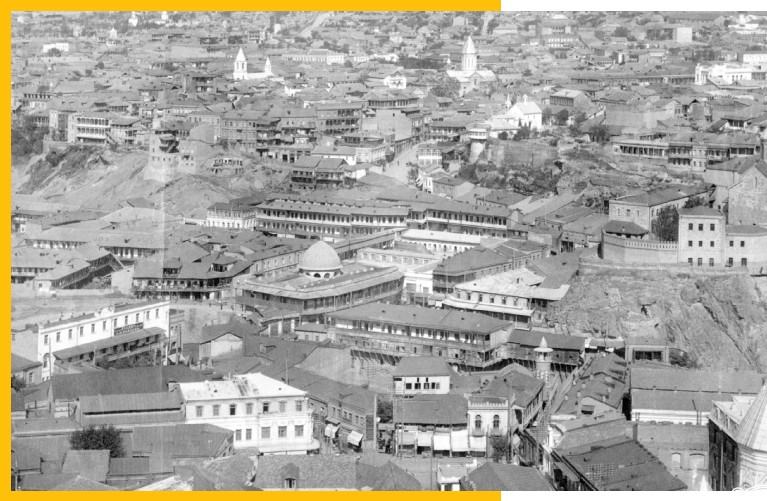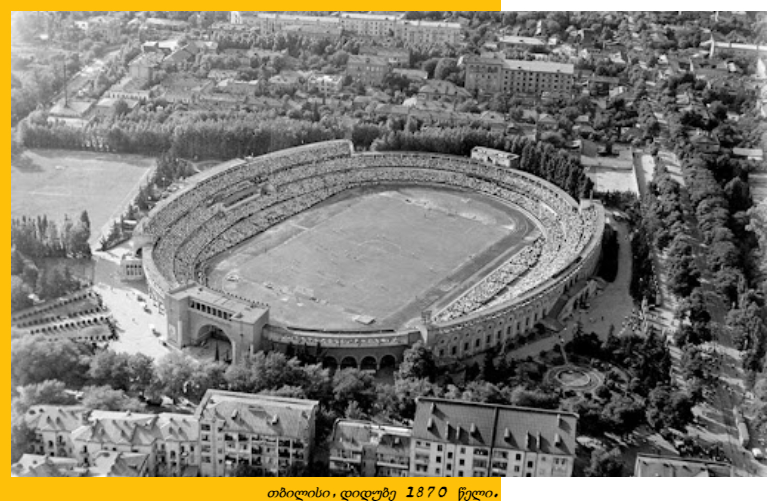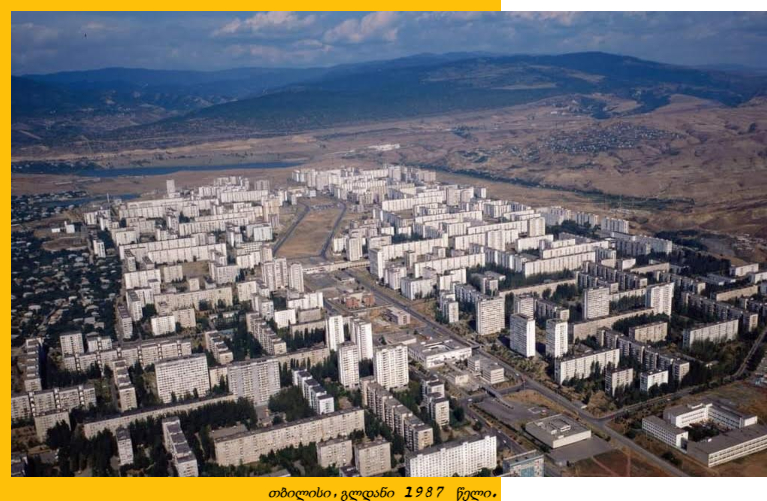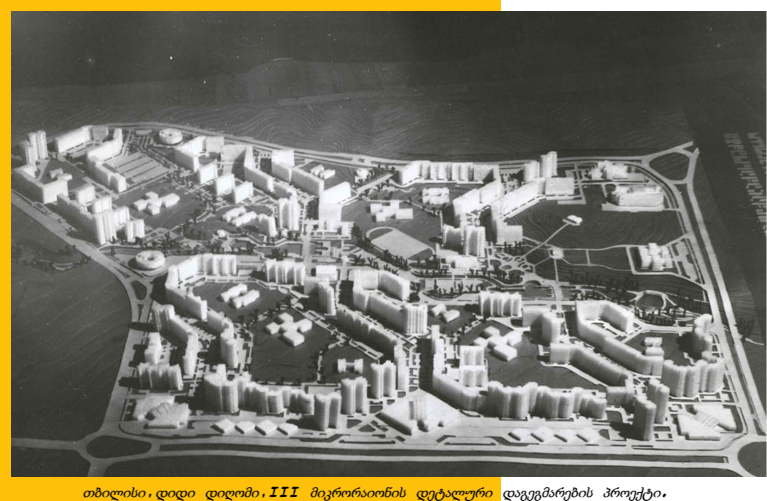News

Urban face of Tbilisi
Tbilisi is the densest urban place in Georgia. According to the latest data, more than 1.2 million people live in the capital, which is 33% of the country's population. The history of the city, as everyone knows, starts from the 5th century. Since this period, its urban face has changed many times. In 1795, after the destructive campaign of Agha-Muhammad Khan, the city was seriously damaged, and the population was halved. Exactly after that, from the 19th century, the construction of Tbilisi actually begins anew. The urban form of Tbilisi is quite strange - it is located longitudinally along the river. From the second half of the 20th century, the city continued to develop longitudinally, this time around the metropolitan lines.
Tbilisi is located as a separate territorial unit in the same-named basin. The terrain of Tbilisi is as diverse as its history. Since 2014, the capital has been officially divided into 10 administrative units, districts:
- Mtatsminda;
- Vake;
- Saburtalo;
- Krtsanisi;
- Isani;
- Samgori;
- Chugureti;
- Didube;
- Nadzaladevi;
- Gldani.
Districts are divided into districts. The mass development of Tbilisi and the creation of new districts or residential areas in the last century is connected with the Soviet period.

During Soviet times, the first planning of Tbilisi took place in the 1930s. At that time, the city had no industrial load and was considered only as an administrative and cultural center. The city was constantly growing, at the expense of students, job seekers and migrants. Later it was industrialized. the so-called Before the Patriotic War, many residential houses were built in Tbilisi, mostly 4-5 storey houses known as the Stalinist project, which were architecturally influenced by socialist classicism. Tbilisi was re-planned in the 1960s.
In the second half of the 1950s, there was a serious shortage of housing in the USSR. The vast majority of people lived in communal houses (several families in one house with common spaces). These circumstances prompted the government to start a mass social housing construction program. During this period, the so-called "Khrushchovka". Soviet urban aesthetics were cold and standard. We can call the politics of this period "urban dictatorship". In the construction of residential buildings, the main priority was economy and speed, so ready-made panel blocks were mainly used. The largest number of buildings in the history of Tbilisi were built between 1971-1980. Georgia's only metro station in Tbilisi has been under construction since the 1950s and was put into operation in 1966. According to Soviet standards, only a city with a million people could have a subway system, so the population growth was also artificial by bringing the working class from the regions. In 1979, the population reached 1 million people for the first time.
In the 1990s, the buildings built during the Soviet era were covered by arbitrary constructions, which distorted the appearance of Tbilisi. In the last 20 years, active construction works have started in the capital, in the form of new type of monolithic buildings and complexes. Mina gained more dominance. The rapid growth of the construction sector created the need for an appropriate legislative framework, which resulted in the adoption of Resolution 41 in 2015. Due to this regulation, constructions today are strictly controlled, which ensures a higher quality than the Soviet panel buildings, most of which have even passed their useful life.

In the 70s of the 19th century, the laying of the railway in Georgia helped to form new neighborhoods in Tbilisi, such as Didube and Nadzaladevi. These two districts were great shelters for the revolutionary workers. The name Didube comes from the words "Didi Dube", which means a flat place. Didube is divided into upper and lower parts and is a part of the wider center of Tbilisi, in which many commercial and industrial facilities are gathered. Since ancient times, Didube has been considered one of the best places for investment. In the 1960s and 1970s, the mass longitudinal development of Didube took place. Cultural-educational and entertainment-recreational facilities have gathered around Tsereteli and Eristavi avenues. Many new residential buildings have been built in recent years. Due to the development of the area, real estate prices are increasing. A park named after veterans (so-called Kikvidze Park) is functioning on several hectares. Didube district is served by three metro stations: Tsereteli, Gotsiridze and Didube itself.

In the 1970s, the Gldani array appeared. The Gldani project belongs to Temur Bochorishvili. 10 microdistricts (I, II, III, IIIa, IV, V, VI, VII, VIII, etc.) are located on both sides of the 2.5-kilometre public axis (where various trade, commercial, etc. facilities are gathered). Initially, Gldani was considered a typical sleeping area, but today it is practically a "city within a city". Gldani has its own identity: numerous public facilities, a metro station, a well-developed transport line and shopping centers. The population is about 200,000 people, which is more than 15% of the population of Tbilisi. Gldani is the most desirable area for those who want to move to Tbilisi from Western Georgia. In recent years, many new types of residential buildings have been built, and real estate prices are increasing daily.

One of the youngest districts of Tbilisi is Didi Dighomi, which is part of Saburtalo district. The construction of the Didi Dighomi was supposed to be carried out in the five-year period of 1986-1990, but it could not be completed completely (only the first and partially the second M/Rs were built). Today, this neighborhood is home to over 50,000 people and is one of the most sought after. In recent years, Didi Dighomi has become a boom in the construction of new buildings, its promotion has been helped by its proximity to the city entrance and university campuses. There are different visions for the development of Didi Dighomi, among them there is talk of extending the tram line from the Didube metro station.
როგორ აძლიერებს მწვანე სივრცეები ცხოვრების ხარისხს? - “სხვა უბნის” მაგალითი
“სხვა უბანი” - კომფორტი, სიმშვიდე და მწვანე სივრცეები ერთ სივრცეში.
2 დაუჯერებელი ამბავი “ალფა სახლისგან” მოიგე ბინა Youtube-ზე! - შეიძინე ბინა დღეში 36 ლარად!
ალფა სახლი“ - პირველი ბინის გათამაშება YouTube-ზე + ბინის შეძენა დღეში მხოლოდ 36 ლარად.
ბინის შეძენა ოჯახთან ერთად - მარტივი, სანდო, გრძელვადიანი ინვესტიცია
ბინის შეძენა ოჯახთან ერთად არ არის მხოლოდ პირადი გადაწყვეტილება – ეს გონივრული ფინანსური ნაბიჯი და სტრატეგიული ინვესტიციაა. ოთხი დამოუკიდებელი ოჯახის წევრის ერთობლივი მონაწილეობა ზრდის უსაფრთხოებას, სტაბილურობას და ფინანსურ მოქნილობას.
Real estate market stability in Georgia
Real estate in Georgia is a stable and profitable choice for investors
Buying your first home - what should a new buyer know?
When purchasing an apartment in a newly built building, each resident has obligations to maintain common areas and ensure safety.







